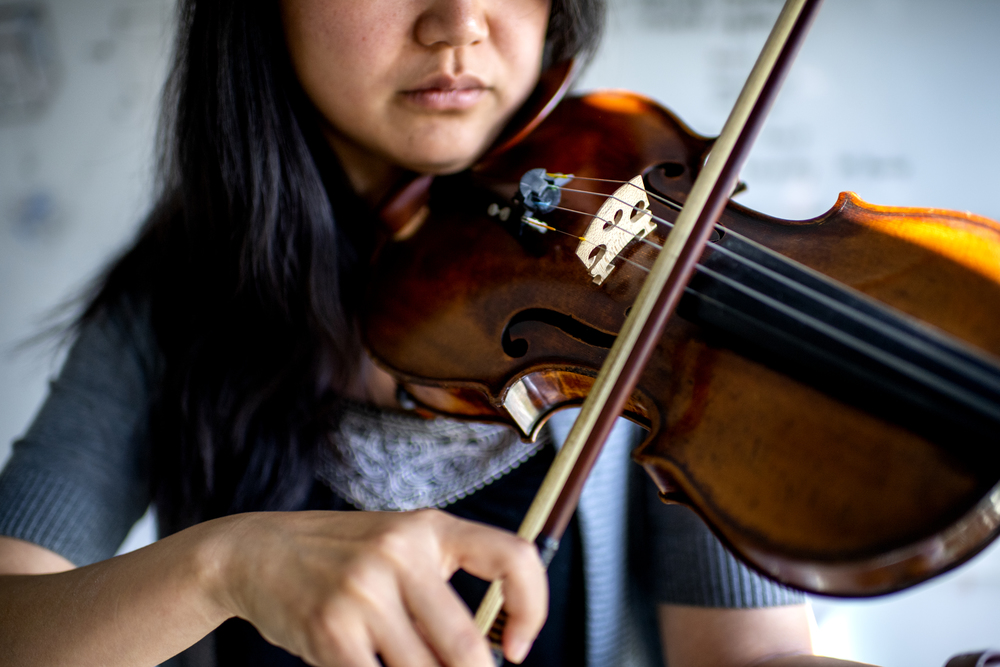Northeastern professor Brian Helmuth has always loved getting out into nature and watching films by the oceanographer Jacque Cousteau. From an early age, he knew that he wanted nothing more than to spend as much time underwater as possible. This inspired him to pursue a career in environmental and marine biology research. As he’s grown as a researcher, Helmuth has found a second inspiration: the creative arts.
November 8 marks STEAM Day, which celebrates careers in science, technology, engineering, arts, and mathematics and encourages students to get involved. The STEAM acronym has gained popularity in recent years, highlighting the importance of including the creative arts with the technical fields. Northeastern professors who research creativity in the brain and interact with creatives daily are taking the time to reflect on the important role of the arts and creativity in scientific research.
“I have a great appreciation for the visual arts as a really effective means of communication, especially when trying to convey really complex ideas,” Helmuth said. “The combination of science and technology with arts is fantastic.”
Helmuth works at the Cognitive Laboratory of Environment and Arts Research (CLEAR), a collaboration between Northeastern University and the Fashion Institute of Technology in New York City. Helmuth’s nickname at CLEAR is “The Marine Biologist.” At the lab, he works closely with Northeastern professor John Coley, “The Psychologist,” and Fashion Institute of Technology professor Keith Ellenbogen, “The Photographer.” The team assesses how engagement through the visual arts can affect environmental stewardship. The partnership has inspired creativity in Helmuth and Coley’s science.

Photograph by Matthew Modoono/Northeastern University
“I love the ‘aha’ moments that frequently happen when talking over problems with my more artistic colleagues,” Helmuth said. “They often have a different view that makes me realize that I was thinking inside of a box that I didn’t even know existed.”
In Coley’s favorite CLEAR project, the team set up projectors around New England to cast larger-than-life scenes of ocean wildlife across underpasses and the sides of buildings. The project intended to inspire ecological restoration by showing people vibrant and beautiful scenes of how ocean animals could thrive if humans stepped up to protect ocean environments.
“Prompting people into action — and even into taking the time to understand the complexities of nature — almost never works by simply throwing data at them and hoping it sticks,” Helmuth said. “Art connects with people in a way that science and math often cannot.”
Northeastern professor Art Kramer looks at cognition, behavior, and health more broadly as the director of the Center for Cognitive and Brain Health. The center studies how health and lifestyle affect behavior and the brain throughout life. Researchers at the center have studied the effects of physical activity, sleep, meditation, and the creative arts.

Photograph by Matthew Modoono/Northeastern University
“We have benefitted from conducting these studies with the arts community by having the opportunity to work with and get to know experts — and their different perspectives — in theater, music, and dance,” Kramer said.
The collaboration, which has involved dozens of professors, post-docs, PhD students, and undergraduates, has studied how the brains of experienced dancers differ from the brains of non-dancers and how the arts can benefit child development as well as enhance the brain health of older citizens.
STEAM Day encourages scientists and artists alike to appreciate how their disciplines can unite with powerful results, but STEAM is also a reminder that science and art are inescapably intertwined through creativity. Kramer, Helmuth, and Coley have found how studying and working with practitioners of the arts exposes the creativity in their science.
“Art does not have a monopoly on creativity,” Coley said. “Science is by definition a creative endeavor involving identifying and pursuing new questions in creative and innovative ways.”
Photo by Matthew Modoono/Northeastern University.

